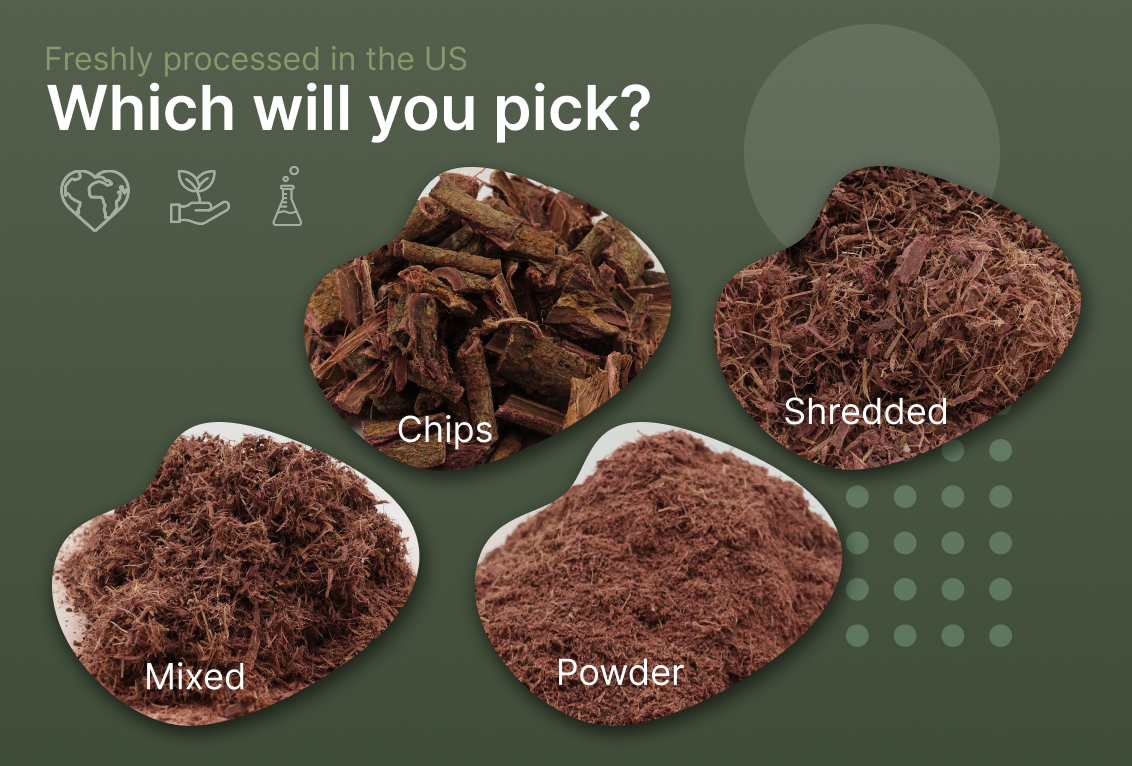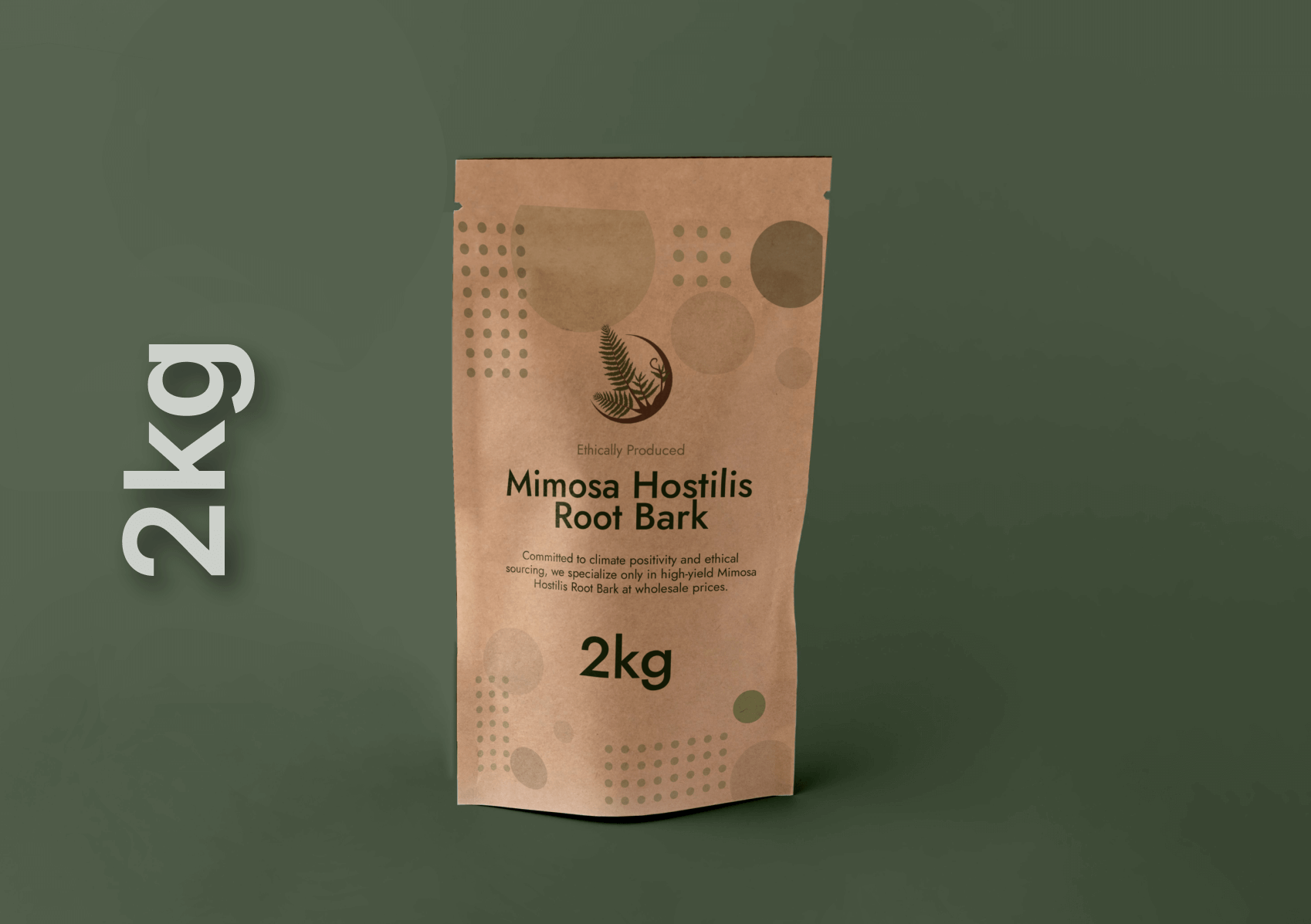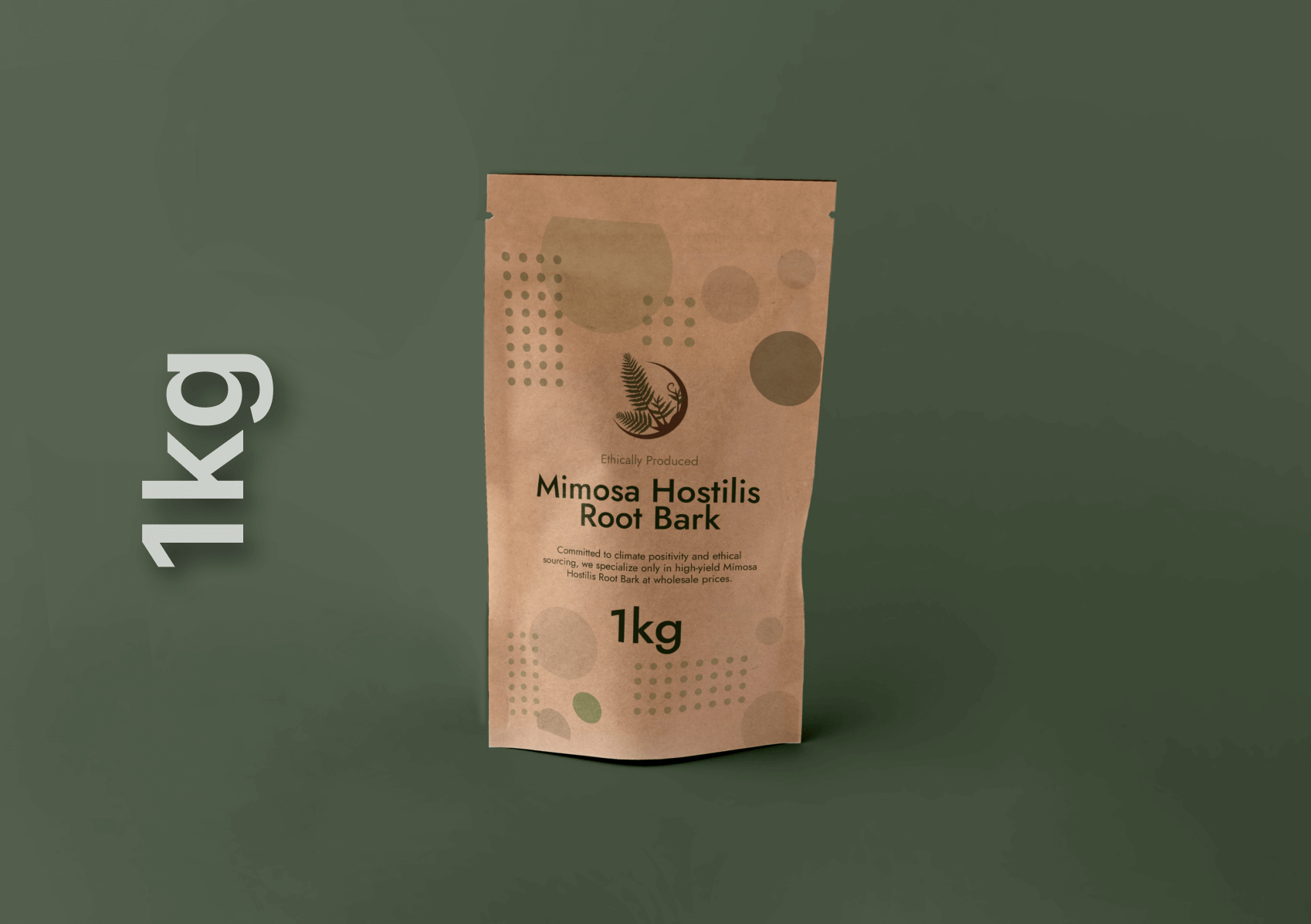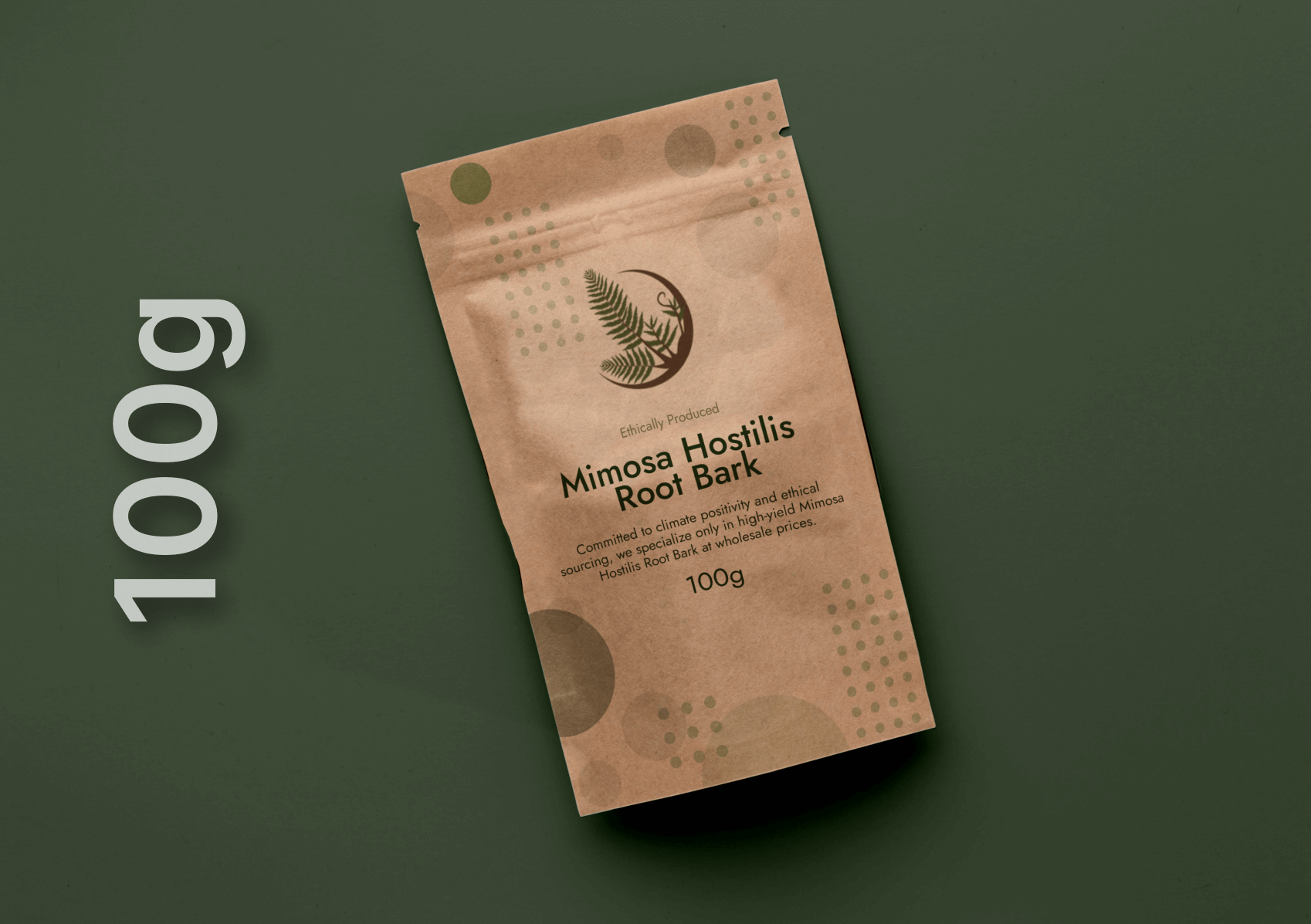Mimosa Hostilis, commonly known by its binomial name Mimosa tenuiflora, is an extraordinary tree found in northeastern Brazil and Mexico. Its root bark is valued for a range of uses—from natural beauty treatments and fabric dyeing to expert herbal treatments. Serious enthusiasts and experts alike look for the best MHRB form to enhance benefits like potency, consistency, and convenience.
With so many varied uses, the choice of the correct form—powder, bark chips, liquid extract, or tincture—can directly influence your outcomes. This resource goes in-depth into each choice, weighs important considerations, and provides useful brewing advice so you can make an intelligent choice.
Principal Forms of Mimosa Hostilis
1. Root Bark Powder
- Description: Brownish-beige finely milled powder made from dried root bark.
Advantages:
- Consistent texture guarantees consistent dosing.
- Simply mixes well with pastes, capsules, or teas.
- High surface area speeds up extraction in brewing.
Disadvantages:
- Dusty handling will irritate if breathed in.
- Needs to be strained to eliminate fine particulates.
2. Bark Chips & Shavings
- Description: Chunky cut dried root bark pieces, of varying size.
Advantages:
- Less dust than powder.
- Visually examinable for purity and quality.
- Best suited for long, slow extractions (e.g., cold soaks).
Disadvantages:
- Slower extraction due to lower surface area.
- Less convenient for uniform dosing.
3. Liquid Extracts
- Description: Strong aqueous or glycerin-based root bark extracts.
Advantages:
- Ready for use, no maceration required.
- Pre-measured dosing through dropper.
- Rapid action when used in formulations.
Disadvantages:
- Shelf life could be shorter without preservatives.
- Usually higher cost per gram of bark equivalent.
4. Alcoholic Tinctures
- Description: Ethanol tinctures that extract water- and alcohol-soluble constituents.
Advantages:
- Covers broad-spectrum extraction (tannins, flavonoids, alkaloids).
- Antiseptic action due to alcohol content.
- Convenient with tincture-based protocols.
Disadvantages:
- Strong flavor and alcohol content.
- Requires careful storage (cool, dark location).
Things to Keep in Mind While Choosing Your Form
Potency & Consistency
- Powder provides very consistent alkaloid profiles per gram, so it’s best for reproducible dosage.
- Extracts provide potent concentrate but can differ between batches; always check certificate of analysis.
Ease of Use
- Powder is easily soluble in hot water but can clump—use intense stirring or a blender.
- Chips need to be soaked for a long time; best for slow-release methods.
- Liquids and tinctures require very little preparation—best for busy practitioners.
Versatility
- If you intend to fill capsules, powder is the obvious choice.
- For coloring hair rinses or fabric, chips or coarse powder might be used to facilitate slow release of pigment.
- Liquid extracts excel in cosmetic applications where texture is critical and solubility is important.
Storage & Shelf Life
- Powder and chips, stored in a sealed, dark, cold place, can retain their potency for 2+ years.
- Liquid extracts have a shelf life of 6–12 months, and alcoholic tinctures can last 1–2 years if sealed carefully.
Use Cases & Practical Applications
Hair Care & Scalp Treatments
Mimosa Hostilis’s high tannin content gives natural conditioning and encourages healthy scalp microbiome balance.
- Powder: Mix with water to create a rinse or mask.
- Tincture: Add a few drops to your conditioner or shampoo for improved pH balance.
Natural Dyeing
Mimosa Hostilis’s rich reddish-brown pigments are highly valued by craftspeople.
- Chips in a cold soak provide gradual, even dyeing appropriate for silk, cotton, or wool.
- Powder for a warm bath gives quicker, deeper coloration.
Herbal & Ceremonial Formulations
Providers of ritual or complementary applications tend to prefer liquid extracts due to their convenience of microdosing and predictability of alkaloid profiles.
- Extracts are easy to measure precisely for reproducible effects.
- Tinctures blend easily with complementary herbal mixes, allowing for a synergistic approach to formulation.
Sourcing & Quality Control
Quality Suppliers
- Search for suppliers who have traceability—farm-to-product transparency.
- Verify third-party testing for heavy metals, microbial pollution, and total alkaloid levels.
Certificates of Analysis (CoAs)
- A current CoA must include moisture content, alkaloid percentage, and residual solvent analysis (for extracts).
- Batch numbers and expiration dates maintain accountability and freshness.
Preparation Tips for Each Form
Powder Preparation
- Warm water to 80–90 °C (not boiling).
- Whisk 5–10 g of powder into the water without forming clumps.
- Simmer for 20–30 minutes, stirring every 5 minutes.
- Strain through a fine mesh or coffee filter.
Chips & Shavings Extraction
- Soak chips in cold water for 8–12 hours.
- Gently heat (below 60 °C) for 2–4 hours to increase extraction.
- Filter and repeat a second time if desired.
Liquid Extract Dosage
- Shake well prior to each use.
- Dose with a dropper: begin low (0.5 mL) and titrate as necessary.
- Mix with carrier oils (e.g., jojoba) for local uses.
Tincture Protocol
- Keep in a cool, dark cupboard.
- Gently swirl before dosing.
- Dilute with water or herbal tea to mellow the pungent alcohol flavor.
Practical Brewing Techniques
Whether brewing a herbal tea, making a cosmetic rinse, or brewing a ceremonial decoction, these general steps are used:
- Weigh your desired form accurately using a digital scale.
- Correct pH if necessary—tannins extract more efficiently at slightly acidic pH (pH 4–5).
- Temperature control is essential: hot enough to extract, but not hot enough to break down important compounds.
- Strain well to avoid particulate matter in the final infusion.
- Keep aliquots in sealed glass vials—mark with date and concentration.
Conclusion: Adapting Your Choice to Your Needs
Your choice of Mimosa Hostilis form depends on your particular use, desired strength, and ease of use needs:
- For exact dosing and capsules, use powder.
- For slow dyeing or slow-release decoctions, use chips.
- For quick preparations or formulations for cosmetics, rely on liquid extracts.
- For broad-spectrum herbal tinctures, an alcoholic extract provides depth and stability.
By comparing potency, ease of use, storage, and application, you can make your choice with confidence. With these facts and detailed preparation procedures at your command, you’ll produce outstanding results—whether in the salon, the lab, or the art studio.




